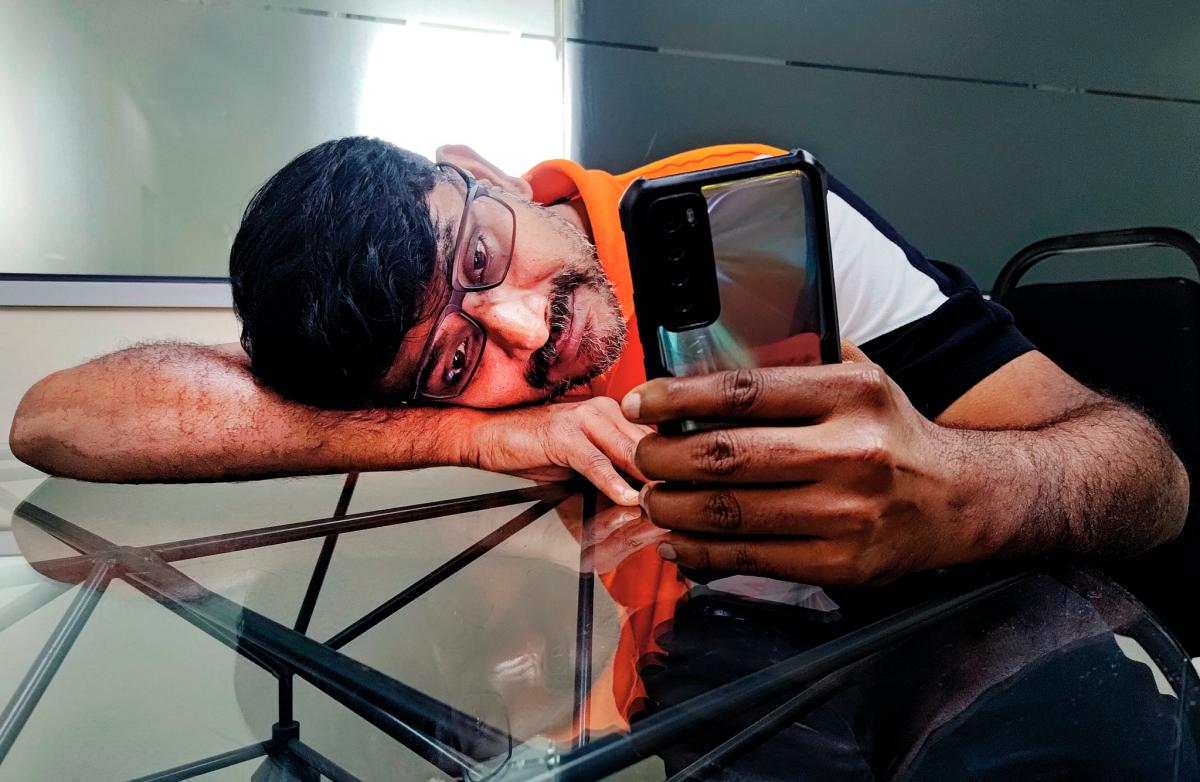PETALING JAYA: The habit of endlessly scrolling through social media content, especially non-educational or trivial material, is becoming alarmingly common among Malaysians, sparking concerns over a rising wave of internet addiction.
Mental health experts warn that the compulsive behaviour, known as doomscrolling and driven by constant exposure to digital media, may take a toll on cognitive health and carry serious, long-term neurological consequences.
Malaysia Organisation of Psychospiritual Wellbeing deputy chairman Dr Adnan Omar said internet addiction often begins in the early stages of life, forming during childhood and adolescence when behavioural patterns are still developing.
He referred to statistics from the National Health and Morbidity Survey 2022, which revealed that 66.7% of secondary school students exhibited sedentary behaviour,
up from 50.1% in 2017 and 47.3% in 2012.
“The Malaysian Youth Index 2020 reported that adolescents spend an average of four to five hours daily on mobile phones and the internet.”
“About 29% of students aged 13 to 17 are already showing signs of internet addiction. That’s a significant portion of our youth being shaped by these habits from a very young age,” he said, adding that digital addiction does not develop overnight.
“No one suddenly wakes up addicted. These behaviours evolve gradually, often reinforced by social media algorithms that narrow a user’s exposure and stifle broader experiences.
“If a child is constantly fed repetitive or shallow content, they may grow into adulthood with a limited range of interests and diminished curiosity.”
He also said the World Health Organisation now recognises internet addiction as a clinical mental disorder under the Diagnostic and Statistical Manual of Mental Disorders (DSM-5). He added that the endless supply of online content has made procrastination more prevalent than ever.
“People have always procrastinated, even before the digital era. Back then, it might have meant going for a jog or chatting with a neighbour. But physical activities have limits – time, energy and space.
“The internet doesn’t. It’s always available, always updating and never runs out. That’s what makes it such a powerful enabler of bad habits.”
Based on DSM-5 criteria, Adnan said anyone spending more than 21 hours per week on non-essential internet use – not related to work, family or education – could be classified as experiencing clinical addiction.
“This is internationally recognised. Countries such as China and Australia have introduced legislation to limit children’s access to the internet.”
Beyond emotional well-being, experts also say internet addiction could be quietly impairing how the brain processes, focuses and remembers.
Universiti Putra Malaysia consultant neurologist Assoc Prof Dr Abdul Hanif Khan said there is growing evidence linking compulsive smartphone use to reduced attention span, working memory and decision-making capabilities.
“Constant scrolling trains the brain to seek fast, bite-sized information. Over time, it erodes the ability to concentrate, reduces mental clarity and leads to subtle memory lapses.
“These are early indicators of what we call minimal cognitive impairment. If this trend continues, we may see it becoming far more common among Generation Z in the next three decades.”
He also said the prefrontal cortex of the brain, the region responsible for impulse control and reasoning, is overstimulated by dopamine surges triggered by constant digital engagement during doomscrolling.
He added that symptoms of concern include short-term memory issues, mental fatigue and difficulty focusing or completing tasks.
“These may not directly cause dementia, but once such impairment begins to affect a person’s ability to manage money, operate devices or carry out basic responsibilities, we’re entering the territory of neurocognitive disorders.”
Abdul Hanif also warned about the emotional fallout of excessive screen time, pointing to increased rates of anxiety, depression and sleep disruption.
He linked these patterns to overstimulation of the amygdala, the emotional control centre of the brain, which becomes hyperactive due to constant digital input.
“You’ll notice how people become restless or anxious when separated from their phones. That’s not a coincidence.
“Emotion and cognition are closely linked. If unhealthy internet habits formed in youth go unchecked, they can evolve into serious neurological and emotional dysfunction in adulthood.”









